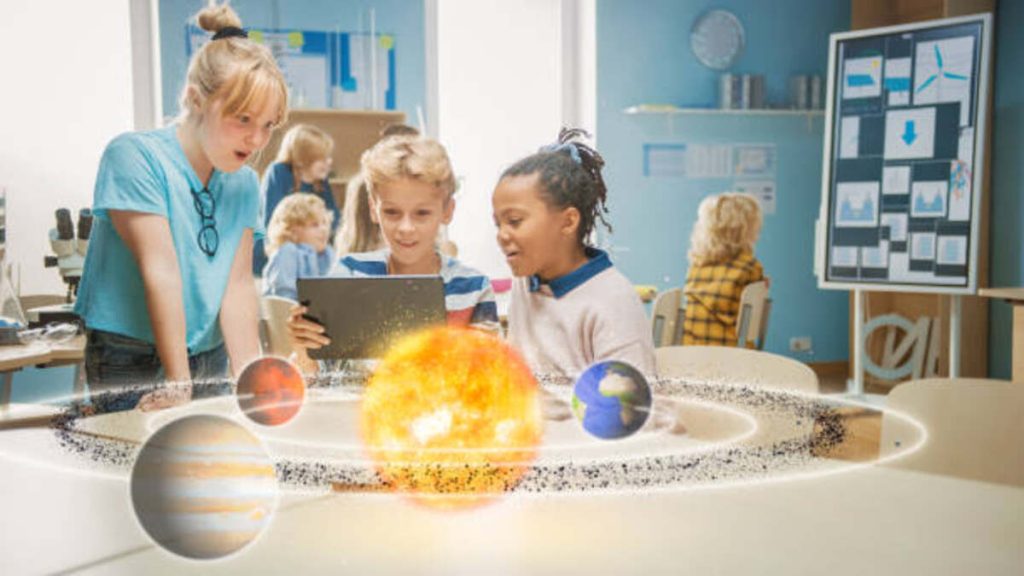Futuristic schools are educational institutions that use forward-looking design principles and technologies to give their students an outstanding education, helping them prepare for future jobs and societal trends.
Futuristic schools are becoming more and more popular as they allow students to learn in ways tailored to their unique learning styles, helping them attain higher test scores while building lifelong skills.
Flexible Learning Spaces
Modern schools are rapidly abandoning the hallway-and-classroom model in favor of spaces designed to support classroom pedagogy. Pandemic relief money provides educators with an opportunity to refurbish existing buildings as well as construct new ones, and some educators are taking advantage of this to invest in facilities that not only boost pedagogy but also support the physical and mental well-being of students.
Oftentimes, these facilities take the form of flexible learning spaces. These typically offer various seating arrangements, from individual chairs to collaborative tables and even open workspaces, as well as wellness rooms with touch-free lighting and plumbing, as well as enhanced HVAC for optimal ventilation.
This type of classroom seeks to create an environment capable of accommodating various forms of instruction in one space with shared furniture and technology, such as lectures, hybrid classes, or fully remote lessons. Some schools even take it a step further by placing all necessary equipment onto carts, which can quickly move between rooms.
Research indicates that changes to the built learning environment when coupled with student-centred pedagogy, can have profound positive effects on adolescent classroom behavior and outcomes in secondary school settings. The primary goal is to provide autonomy within each class for students as active participants in their learning while supporting each other’s work collaboratively.
Recent research examined the effect of changes to both the built learning environment and pedagogy practice in flexible learning spaces classrooms. Students from twelve public schools in NSW, Australia, participated in a cross-over trial where they observed both traditional classrooms as well as flexible ones on one day; students collaborated with their classmates before presenting their work back to class before spending some time being taught by their teacher or working alone.
Researchers found that students enrolled in flexible learning spaces spent less time being taught in whole group sessions and more time collaborating, interacting, and presenting their work than in traditional classrooms. Furthermore, there was significantly less talking out of turn or disrupting other students in flexible learning spaces.
Comfortable Seating Arrangements
Comfortable classroom seating arrangements are essential components of an effective student-focused learning environment. Students who feel at ease tend to work harder in class and retain information for longer.
One popular option for classroom seating arrangements is center or station seating arrangements, in which students sit at various activity stations, with each one having its learning task. This seating arrangement encourages both hands-on and independent learning while still enabling instructors to access individual students needing assistance quickly.
Flexible seating is another popular approach in which students have the freedom to select from various seating options such as floor chairs, wobble stools, or ergonomic office desks. This seating arrangement gives students more freedom when it comes to choosing which chair or desk works best for them, creating a more relaxed and student-centric classroom atmosphere while helping them discover learning styles and improve higher-order thinking skills. Furthermore, students often take turns sitting on the floor or wobbling on a stool, which also helps build social skills among classmates.
Direct Communication Between Teachers & Students
Modern school students often become frustrated with traditional education methods; some are turning to futuristic methods to make learning more engaging and effective. This new type of education can be tailored specifically to each student’s needs and interests for more successful learning outcomes; it also considers each person’s strengths and weaknesses to maximize potential achievement.
One effective method of engaging students lies in direct dialogue between teacher and students, which plays an integral part in any classroom and can make all the difference in whether students remain engaged with learning. Studies have indicated that conversations between teachers and students play an essential role in shaping learning progress.
Educators are making great efforts to adapt their teaching methods to how modern students learn while embracing technology to give their pupils every tool necessary for success in an ever-evolving world. While these changes may require considerable work from educators, the benefits are worth their effort for students who seek a more efficient, interactive, and rewarding educational experience.
Futuristic schools are educational facilities designed with the future in mind, from their physical structure and curriculum to the technology used in classrooms. Some futuristic schools resemble modern office buildings, while others may feature natural settings designed to give students a deeper understanding of their world while encouraging innovation by providing students with creative freedom.
Future schools also boast flexible spaces and comfortable seating arrangements that maximize learning. Comfort is critical to an optimal educational experience, and futuristic schools offer seating arrangements sure to please their students, from reclining sofas to beanbag chairs, something that will suit everyone at once.
Though most people don’t have access to futuristic schools in their backyards, these facilities are increasingly springing up worldwide. From dance studios and engineering academies to futuristic buildings like Ramon C. Cortines School of Visual and Performing Arts in Los Angeles – which cost $232 million alone to build – to Denmark’s Orestad Gymnasium made as a multilayered cube to maximize flexibility for teaching collaborative teaching methods – futuristic schools are an emerging trend worldwide.
Preparation for Modern Technology
Future schools must be well-equipped with cutting-edge technology to give their students access to the latest knowledge in various subjects and enable teachers to assess student progress accurately. Furthermore, technology makes completing assignments and homework much more straightforward for students.
One of the critical aspects of the school of the future is its capacity to help students learn through hands-on experience. This can be accomplished by creating an environment in which students can work on projects or take part in field trips – giving them a chance to practice their skills and build their confidence.
Another way of preparing students for the future is to foster creativity in them by giving them the chance to use innovative tools and techniques that enable them to find solutions to complex problems while simultaneously encouraging collaborative efforts with fellow students and teachers on developing fresh concepts.
As our world continues to change, schools must adapt accordingly. Many schools now teach coding and AI courses as preparation for future technological advancement. Furthermore, new methods encourage innovativeness and creative expression among their student body.
Schools need to use modern technology to streamline administrative processes. For instance, using online learning management systems to track student attendance, grades, and assignments will save both time and money by eliminating physical teaching materials while providing instructors with access to their jobs from anywhere with internet connectivity.
The futuristic school of the future will be more effective than traditional ones, thanks to its emphasis on collaboration and cutting-edge technologies. Students will become more creative and innovative while also learning the necessary skills for future careers. Students may also use their creativity and innovation to address global issues more sustainably – all preparing them for a more sustainable and prosperous future.



